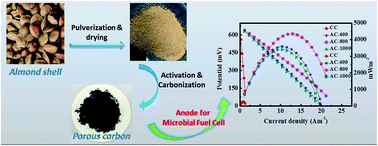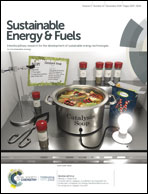Almond shell derived porous carbon for a high-performance anode of microbial fuel cells
Abstract
The microbial fuel cell (MFC), as one of the most promising biotechnologies, has the capability to harvest electricity by electrochemically degrading organic matter in wastewater. In this study, we report a simple calcination carbonization process to prepare a set of carbon materials by using almond shells as a new type of biomass precursor. The as-prepared carbon is characterized as having a favorable structure and properties required for anode materials of a MFC with decent electrical conductivity. The MFC using the porous carbon obtained at 800 °C (PC-800) as the anode can generate a maximum power density of 4346 mW m−2, much higher than that of MFCs with carbon counterparts and commercial carbon cloth (CC) as the MFC anode.



 Please wait while we load your content...
Please wait while we load your content...